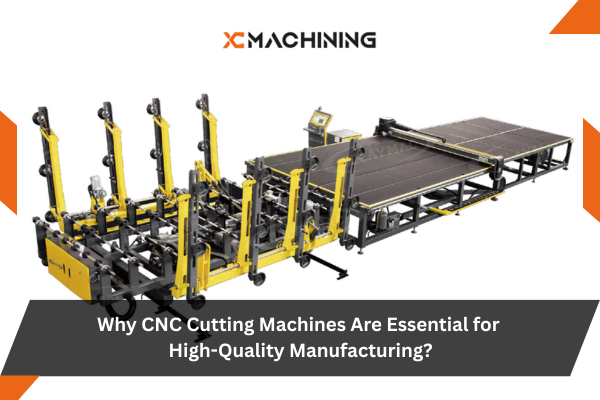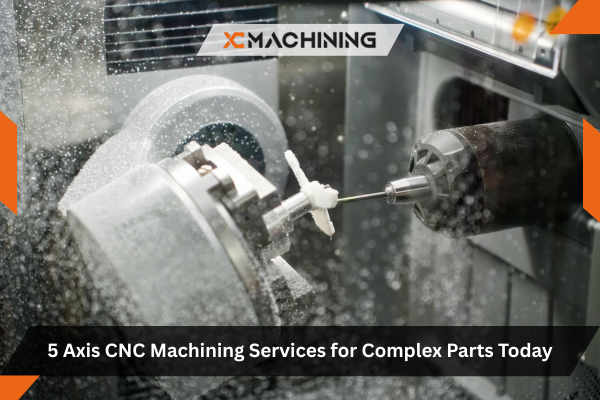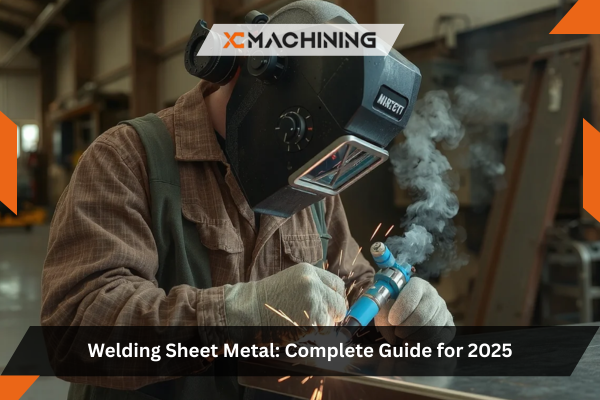Imagine you’re walking through a factory floor. The machines around you hum and buzz with efficiency. Workers are busy overseeing the machines that do the heavy lifting. You see massive machines cutting through metal, wood, and plastics, effortlessly creating parts with perfect shapes and sizes. Among them, the CNC cutting machine stands out. It’s sleek, precise, and does the job quickly. The world of manufacturing wouldn’t be what it is today without these powerful tools. CNC cutting machines are transforming industries worldwide by enhancing accuracy, speeding up production times, and reducing costs.
What Is a CNC Cutting Machine?
Let’s start with the basics. CNC stands for Computer Numerical Control. This simply means that a computer controls the cutting tool. The machine follows precise instructions programmed into it, ensuring each cut is flawless. Whether it’s shaping metal or cutting intricate patterns in wood, these machines can do it all. Unlike manual cutting tools, CNC machining don’t require the constant oversight of a worker. The computer takes care of the details, allowing operators to focus on monitoring the overall process. This not only saves time but ensures accuracy that human hands alone can’t always achieve.
So, what makes these machines so crucial? It’s all about precision, speed, and efficiency. Without CNC cutting machines, manufacturers would face longer production times and more mistakes. With these machines, production is faster, safer, and more reliable.
Improving Consistency and Reducing Variability
One of the main challenges in traditional manufacturing is maintaining consistency. When multiple workers handle the same task, slight variations can occur, leading to products that don’t always meet the same standards. CNC cutting machines, however, solve this problem effortlessly.
Since CNC machines follow computer-generated programs, they execute tasks with the same accuracy every time. There’s no room for human error, ensuring that the final product is identical to the last. This consistency is crucial, especially in industries where quality control is a top priority.
Here are the key ways CNC cutting machines maintain consistency:
- Exact repetition: Each product is produced with the same measurements and specifications; no matter how many are made.
- Uniformity: CNC machines ensure identical quality across each batch.
- Error reduction: As machines follow pre-programmed instructions, there’s little room for mistakes.
- High-volume production: CNC machines can maintain consistency even when mass-producing large quantities of parts.
By improving consistency, CNC cutting machines help businesses provide reliable products, which builds trust with customers and minimizes costly errors.
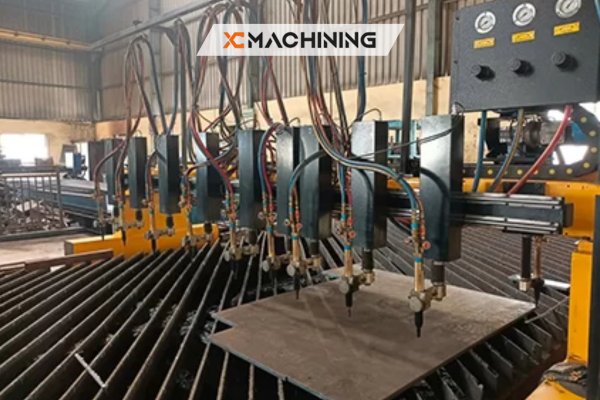
Increased Precision for Better Quality
One of the standout benefits of CNC cutting machines is their precision. Imagine trying to cut a piece of wood or metal by hand. The chances of a crooked cut or uneven edge are pretty high, right? Now, imagine a machine that can cut the same piece exactly the same way every single time. That’s the power of CNC.
These machines use computer-controlled movements to perform cuts with such accuracy that it’s almost impossible for human hands to replicate. Even the tiniest details, like intricate shapes or fine lines, are easily achievable. For example, when making small mechanical parts, even the smallest error could lead to failure. A CNC machine tools can perform these cuts with an accuracy of up to 0.001 mm, ensuring parts fit together perfectly.
Faster Production, Less Downtime
The speed at which CNC cutting machines work is another reason they’re essential in manufacturing. Speed means a faster turnaround for projects and quicker delivery to customers. Let’s face it, no one wants to wait for weeks to receive a part or product. With CNC machines, production time is cut dramatically.
Consider a scenario where a traditional cutting machine takes an hour to finish a single job. With a CNC cutting machine, the same task could be completed in just 10 minutes. That’s a significant improvement. Faster production allows manufacturers to meet tight deadlines, cut down on costs, and increase overall productivity. Plus, with minimal human intervention, CNC fixture help to reduce costly errors and downtime, keeping operations running smoothly.
Cost Savings in the Long Run
When you first hear about CNC cutting machines, they might sound expensive. However, the investment pays off over time. Think about it. The higher the accuracy, the fewer errors there are. Fewer errors mean fewer materials wasted. CNC machines also cut down on labor costs. While a traditional worker might take hours to cut a batch of parts, the CNC machine does it in a fraction of the time.
Let’s say that you’re manufacturing a part that costs $10 to make. With manual labor, you might waste 5% of the material during the process due to inaccurate cuts or mistakes. With a CNC cutting, you reduce that waste to practically zero. This means you get more product out of the same amount of material. Over time, this translates to big savings.
Studies show that manufacturers who switch to CNC machines can reduce costs by 30-40% over the long term. Those savings are hard to ignore, especially for companies looking to stay competitive in an increasingly cost-conscious world.
The Role of CNC Cutting Machines in Complex Manufacturing Tasks
Manufacturing processes are becoming more complex, with the demand for intricate and high-precision parts increasing. Whether it’s for the aerospace industry, automotive components, or even intricate consumer electronics, CNC cutting machines are up to the task.
These machines can handle even the most complex designs, performing tasks that would be nearly impossible with manual tools. Whether it’s creating tiny holes, engraving fine details, or cutting complicated shapes, CNC machining magnesium provide the accuracy and reliability needed for complex parts.
Here’s how CNC cutting machines tackle complex manufacturing:
- Intricate cuts: CNC machines can create small, detailed cuts that require high levels of accuracy.
- Multi-axis operations: Modern CNC machines can move on multiple axes, allowing for more complicated designs.
- Customization: These machines can handle custom and one-off designs, making them perfect for specialized parts.
- Flexible materials: CNC cutting machines work with a variety of materials, allowing for complex cuts in metal, plastic, and wood.
As manufacturing demands grow, CNC cutting machines continue to evolve, meeting the needs for even more complex tasks while ensuring precision and efficiency.
Versatility: From Metal to Wood and Beyond
CNC cutting machines are incredibly versatile. They can work with a wide variety of materials, from metals like steel and aluminum to plastics, wood, and composites. Whether you’re cutting a delicate wood pattern for furniture or shaping a metal part for a car engine, CNC machines can handle it all.
This versatility makes them ideal for a wide range of industries, including automotive, aerospace, construction, and even furniture making. Whether you’re working with tough metals or softer materials, a CNC cutting machine can adapt to the task at hand. It’s not just about cutting straight lines either. These machines can also handle more complex tasks, like engraving or intricate detailing, all while maintaining the highest level of quality.
Automation for Increased Productivity
Automation is another reason CNC cutting machines are essential in modern manufacturing. In a typical factory, machines need constant attention and manual operation. But with CNC machines, everything is automated. Once the program is set, the machine runs with little to no supervision.
Imagine you’re running a factory that produces hundreds of parts daily. With CNC machines, you can automate the process, reducing the need for constant manual labor. This doesn’t just save time—it increases productivity. Since the machine works 24/7 without needing breaks, manufacturers can produce more in less time.
Moreover, automation reduces the chances of human error, ensuring that each part produced is of the same high quality as the last. This consistency is vital when customers expect the same standard every time they place an order.
Minimizing Material Waste with CNC Cutting Machines
Material waste is one of the biggest concerns in manufacturing. If you’re cutting parts manually, you might end up with more scraps than desired, leading to a higher cost of raw materials. However, CNC cutting machines can help minimize waste and maximize efficiency in this area.
CNC machines can make the most of every piece of material, cutting shapes and patterns precisely as needed. Since the machine’s path is optimized to avoid unnecessary waste, manufacturers get more usable products from the same amount of raw material.
How CNC cutting machines reduce material waste:
- Optimal cutting paths: CNC machines are designed to use the least amount of material needed for each part.
- Reduced offcuts: The machine cuts precisely, so there’s less leftover material.
- Recycling potential: Leftover materials are often usable for smaller projects or recycled for future use.
- Efficiency: With fewer materials wasted, companies can lower production costs.
Thanks to CNC cutting machines, businesses not only save on raw materials but also contribute to more sustainable production practices.
Enhanced Safety for Workers
Manufacturing environments can be dangerous. The risk of injury from machines is a concern in any factory. But CNC cutting machines offer a much safer working environment compared to manual machinery. Since these machines are automated and computer-controlled, the operator is not directly involved in the cutting process. This greatly reduces the risk of accidents. In addition, CNC machine operator are equipped with safety features like emergency stop buttons and automatic shutoffs, which further enhance safety.
Reducing Human Error
Human error is inevitable. Even the most skilled worker might make a mistake, and those mistakes can be costly. CNC cutting machines eliminate a lot of human error by following precise, pre-programmed instructions.
This accuracy reduces the chances of costly mistakes like cutting the wrong shape, damaging materials, or wasting time. Manufacturers can ensure that every part can correct specifications with CNC cutting machine.
Flexibility in Design and Customization
Another huge advantage of CNC cutting machines is the flexibility they offer in terms of design. Need to change the shape of a part? No problem. With a CNC machine, adjusting the design is as simple as changing the program. This is a game-changer for manufacturers who need to respond quickly to customer demands or make design tweaks on the fly.
For example, in the past, making design changes might require retooling an entire production line. With CNC cutting machines, you just input the new design into the computer, and the machine adjusts accordingly. This ability to quickly adapt to changes makes CNC cutting tools an invaluable tool in industries where customization and flexibility are key.
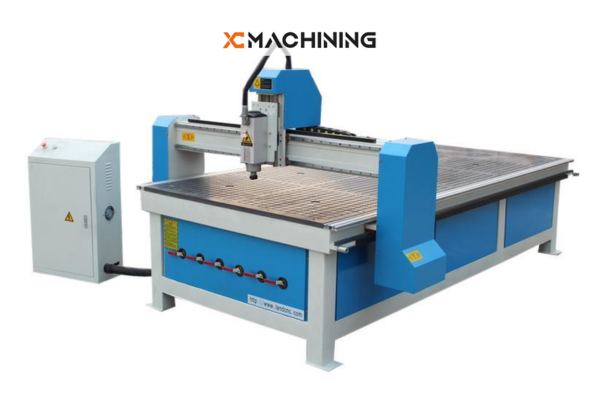
CNC Machines and the Future of Manufacturing
Looking ahead, it’s clear that CNC machines are not just a passing trend—they’re the future of manufacturing. As technology continues to evolve, these machines are becoming even more advanced. Features like artificial intelligence, machine learning, and automation are being integrated into CNC systems, allowing for even more efficient and precise manufacturing processes.
As the technology behind CNC cutting machines improves, manufacturers will be able to create even more complex and intricate designs, further driving innovation in industries across the board.
Conclusion
CNC cutting machines have become indispensable in the world of manufacturing. Their ability to produce high-quality parts with speed, precision, and minimal waste has made them essential for businesses looking to stay competitive in today’s market. Whether you’re in the automotive, aerospace, or furniture industry, these machines can help you boost productivity, reduce costs, and ensure the highest standards of quality.
The role of CNC cutting machines in modern manufacturing can’t be overstated. They’re transforming the way we create products, and the future looks bright. So, the next time you walk through a factory, take a moment to appreciate the quiet hum of the CNC machine and the incredible work it’s doing behind the scenes.
Will these machines continue to shape the future of manufacturing? I think we can all agree they’re here to stay.
FAQs
What are CNC cutting machines?
CNC (Computer Numerical Control) cutting machines use programmed software to control cutting tools with high precision. They automate processes like milling, routing, and laser cutting, ensuring consistent and accurate results for various materials like metal, plastic, and wood.
Why are CNC machines essential in manufacturing?
CNC machines provide unmatched accuracy, speed, and repeatability. They reduce human error, increase production efficiency, and allow for the creation of complex designs, making them indispensable for industries requiring high-quality, consistent components.
What materials can CNC cutting machines handle?
CNC machines cut metals, plastics, wood, foam, and composites. Their versatility makes them suitable for industries like aerospace, automotive, and furniture, enabling precise cuts in materials with varying properties and thicknesses.
How do CNC machines improve production efficiency?
CNC machines operate continuously with minimal downtime, process complex parts faster than manual methods, and require less labor. Their automation reduces waste and speeds up production cycles, increasing overall manufacturing efficiency.

